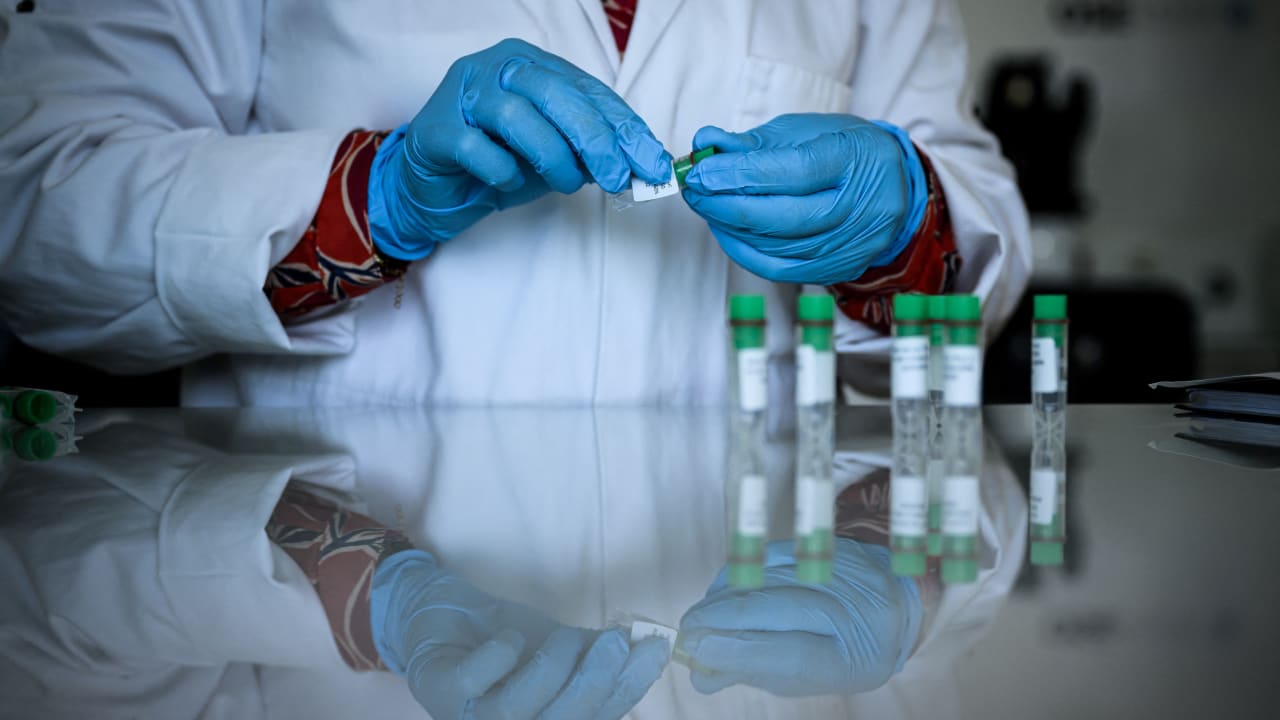By Diana Bletter
Hebrew University researchers say their innovative test can find tRNA fragments unique to the neurodegenerative disease before patients even have symptoms
Israeli researchers say they have developed a blood test that can accurately tell whether someone might be developing Parkinson’s – even before they have symptoms.
“This discovery is a big step forward in how we understand and detect Parkinson’s,” said lead scientist Prof. Hermona Soreq of The Edmond and Lily Safra Center for Brain Sciences and The Alexander Silberman Institute of Life Sciences at the Hebrew University.
The scientists took a novel approach by analyzing transfer RNA fragments (tRFs) – traditionally overlooked in Parkinson’s research – to detect the disease in its earliest stages.
The disease is often diagnosed only after significant brain damage has occurred, “when there’s no use in developing therapeutics,” Soreq told The Times of Israel by telephone. “We now have a simple, minimally invasive blood test, so if we catch the disease at a much earlier stage, then there is hope.”
PhD student Nimrod Madrer worked on the study under Soreq’s supervision with Dr. Iddo Paldor from the Shaare Zedek Medical Center and Dr. Eyal Soreq from the University of Surrey and the Imperial College London, who is also Soreq’s son.
Searching for patterns
In a telephone interview, Madrer, 34, said that he had finished a research project with Soreq for the last part of his PhD and was wondering what to work on next. He considered looking at tRNA fragments in Parkinson’s Disease because the field hadn’t been studied in depth “and started from there.”
Then, on October 7, 2023, thousands of Hamas-led terrorists attacked southern Israel, killing 1,200 people and kidnapping 251, mostly civilians, into Gaza.
Whenever he had any free time, he said, Madrer would go over his scientific research. As he studied the tRNA fragments in Parkinson’s, something caught his eye.
Madrer decided to put all “the sequencing on a Word file and look at them.”
He then saw that a repetitive sequence “sort of pops up.”
“I was used to searching for patterns in things as part of my [military] training,” he said. “I started to see a pattern of tRNA fragments that were elevated in the cerebrospinal fluid in Parkinson’s patients.”
Soreq recalled that when she asked Madrer about the repetitive pattern he found, he said, “‘What do you think I’ve been doing in 8200 for almost six years? I’ve been screening data looking for repetitive patterns.’ So, we looked for the sequence and found that it is really repetitive, that it’s unique to Parkinson’s patients.”
Two biomarkers that hold the key
Soreq explained that she was intrigued by the tRNA fragments.
“Some people say that when a tRNA breaks down, the leftovers are junk,” she said. “And I kept saying, ‘Nature doesn’t allow junk. If it’s there, then it does something.’”
The researchers identified two key biomarkers with changed patterns that had the potential to reveal significant changes in the body linked to neurodegeneration.
First, they found tiny tRNA fragments, known as tRFs, that carry the specific pattern of the seven building blocks of RNA and DNA. The researchers termed them RGTTCRA fragments, after the names of the RNA molecules included in that pattern.
At the same time, they discovered another group of fragments that come from mitochondria, the energy-producing parts of cells that are known to be damaged in Parkinson’s disease.
Compared to healthy individuals, in Parkinson’s patients, the RGTTCRA-tRFs were more abundant while the mitochondrial tRFs were lower.
By measuring the ratio between these biomarkers, their new test could distinguish pre-symptomatic Parkinson’s patients from a healthy control group.
The test uses the same common lab technique used to diagnose COVID-19, examining how much of each RNA fragment is in a blood sample, and then calculating the ratio between them.
To test their discovery, the scientists used blood samples of 60 Parkinson’s patients and 60 healthy controls (matched in age, sex, genetic background, and ethnicity to the diseased patients) from the Michael J Fox Foundation for Parkinson’s Research.
Early symptoms: loss of smell and trouble sleeping
The Parkinson’s patients were recruited based on having early symptoms such as loss of smell and trouble sleeping but before any appearance of the trademark symptoms, such as tremors.
Then, the researchers identified the ratio between the RGTTCRA-tRFs and mitochondrial tRFs in their blood samples and used a machine-learning algorithm to predict which patient is a pre-symptomatic Parkinson’s patient and which one is a healthy individual, Madrer explained.
Their blood test correctly differentiated between healthy and diseased individuals about 86 percent of the time. The results were better than current diagnostic tools.
“The idea is to make an easy blood test that any clinician can administer so that in 10 years, every patient over the age of 65 can take it and see if this patient is at risk for developing Parkinson’s,” Madrer said.
The researchers are now in discussion with pharmaceutical companies, aiming to run the test on a substantially larger and more diverse cohort of patients, he explained, a step that is critical for the test to be approved by the FDA.
“We are also working to find the mechanism of action that leads to the changes we see,” he said.
The scientists are not sure whether the high levels of RGTTCRA-tRFs in the blood of Parkinson’s patients are a cause or a contributor to the progression of the disease.
“We still have a long way to go before we get there,” Madrer added. “But understanding the mechanism behind it will hopefully lead to a new potential treatment. ”
















.png)


